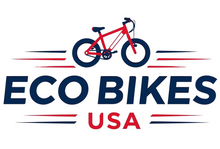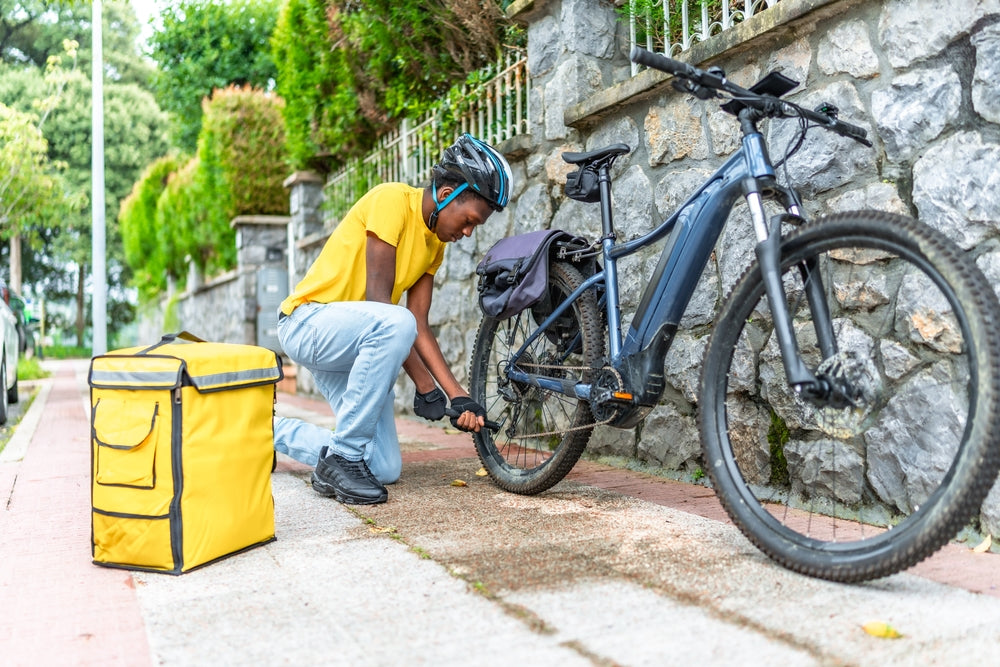Your e-bike can take you farther and faster than a regular bike. But that extra power means you need to be more careful. A quick check before each ride can prevent breakdowns and keep you safe.
Here's what to inspect before you roll out.
Why pre-ride checks matter
E-bikes are heavier than regular bikes. They go faster too. A loose bolt or low tire pressure that might be annoying on a regular bike can be dangerous on an e-bike.
Checking your bike before riding helps you catch problems in your garage instead of 10 miles from home.
The ABC check: air, brakes, chain
This is the foundation of bike safety. It takes less than two minutes.
Air: Squeeze your tires. They should feel firm. If you can press them in easily, add air. Check the sidewall of your tire for the recommended PSI. E-bikes need properly inflated tires more than regular bikes because of the extra weight.
Brakes: Roll your bike forward and squeeze each brake lever. The bike should stop cleanly. Test both brakes separately, then together. Make sure there's space between the lever and handlebar grip when you squeeze hard.
Chain: Look at your chain. Is it rusty? Dry? Does it sag? A clean, lubricated chain keeps your bike running smoothly and safely.
Battery and display check
Turn on your display. Check the battery level. You don't need the battery to ride an e-bike, but you won't have pedal assist without it.
Make sure the battery is locked in place. Give it a light tug. If it moves, reseat it and lock it again. A loose battery can fall out while you're riding.
If you see "SERVICE" on your display, don't ride. Check your owner's manual for troubleshooting steps.
Lights and reflectors
Test your front and rear lights. Turn them on and off. Make sure they're aimed correctly and securely attached.
Check that reflectors face the right direction. Visibility is crucial for staying safe, especially at dawn, dusk, or night.
Quick safety scan
Look over your bike for anything unusual:
- Loose bolts or parts
- Cracks in the frame
- Worn brake pads
- Damaged cables
- Objects stuck in the wheels
Seat and handlebars
Make sure your seat is at the right height and tightened down. It shouldn't twist or slip.
Grab your handlebars and try to twist them. They shouldn't move. Turn them left and right. Cables shouldn't pull tight or strain.
Plan your ride
Before you leave, think about:
- How long you'll be out
- What time you'll return
- Current weather conditions
- Type of terrain you'll encounter
This helps you pack the right gear. If you're riding at sunset, you need lights. If it might rain, bring a jacket. Long ride? Pack water and snacks.
Comparison: Pre-Ride Check vs. Post-Ride Check
| Check Type | When to Do It | What to Focus On | Time Required |
|---|---|---|---|
| Pre-ride | Before every ride | Tires, brakes, battery, lights, loose parts | 2-5 minutes |
| Post-ride | After every ride | Chain cleaning, battery removal, damage inspection | 5-10 minutes |
Doing a post-ride check makes your pre-ride check faster. You'll already know what needs attention.
What to carry
Keep these items with you:
- Tire pump or CO2 cartridges
- Patch kit or spare tube
- Multi-tool
- Phone
- Water
Common mistakes to avoid
Don't skip checks because you're in a hurry. Give yourself an extra 5-10 minutes before you need to leave.
Don't ignore small problems. A slightly loose bolt today can become a dangerous failure tomorrow.
Don't forget to charge your battery after rides. Checking battery level right before you leave is too late if you're already running behind.
When to get professional help
Some problems need a bike shop:
- Brakes that don't stop the bike
- Wheels that wobble when spinning
- Battery that won't charge or stay locked
- Display showing error codes
- Unusual noises from the motor
Making it a habit
The first few times, this checklist might feel long. But it becomes automatic. Most riders can complete a full pre-ride check in under three minutes.
Set a reminder on your phone. Or make it part of your routine, like putting on your helmet.
Your safety matters
E-bikes are safe when properly maintained. Studies show that riders who do regular safety checks have fewer mechanical failures and accidents.
Your bike gets you where you need to go. Take care of it, and it'll take care of you.





